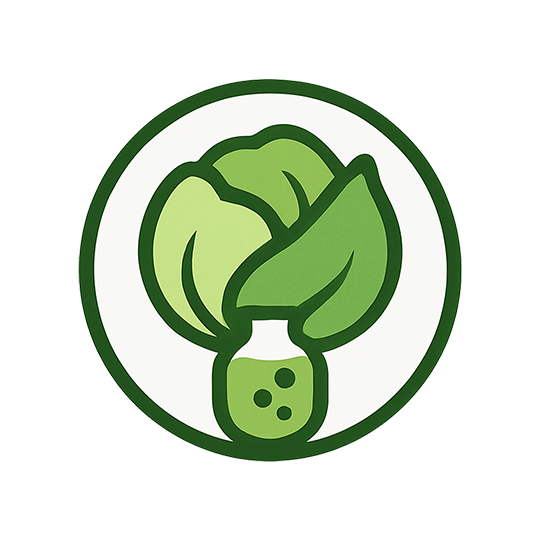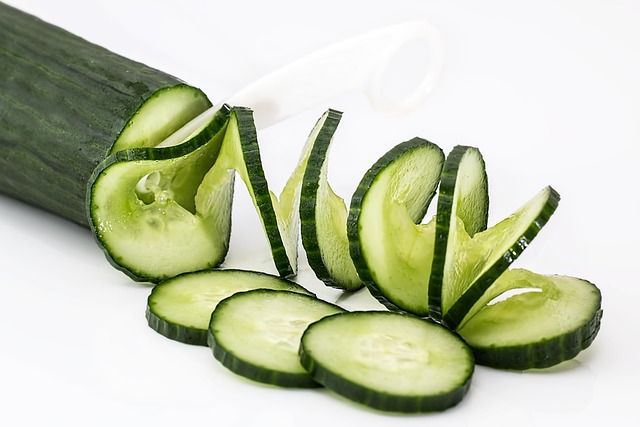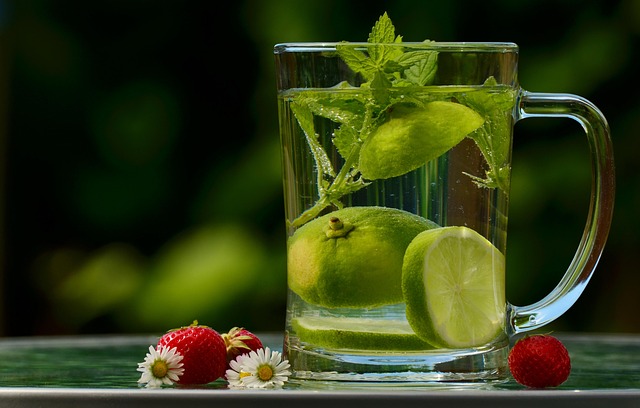When we think about staying hydrated, water is usually the first thing that comes to mind. However, the food we eat plays an equally vital role in keeping our bodies balanced and replenishing fluids. Foods with high water content, often referred to as hydrating foods, provide a steady stream of moisture, electrolytes, and nutrients that support everything from joint lubrication to skin health. Incorporating these foods into everyday meals can help maintain optimal hydration without relying solely on plain water.
Why Hydrating Foods Matter
Our bodies are composed of roughly 60% water, and this fluid is essential for cellular processes, digestion, circulation, and temperature regulation. While drinking fluids is necessary, the quality of those fluids—and the nutritional profile of the foods we consume—can dramatically influence hydration status. Hydrating foods offer a gentle, continuous source of water, along with essential minerals like potassium, magnesium, and sodium, which help the body retain fluid and prevent dehydration.
Moreover, many hydrating foods are low in calories yet rich in vitamins, antioxidants, and fiber, making them excellent choices for those looking to support weight management, gut health, and overall wellness. By focusing on nutrient-dense, high-water foods, you can create a balanced diet that naturally keeps you well‑hydrated throughout the day.
Key Nutrients in Hydrating Foods
While water content is the most obvious benefit, hydrating foods also supply a host of other nutrients that contribute to wellness:
- Potassium: Helps maintain electrolyte balance and supports muscle function.
- Magnesium: Plays a role in fluid regulation and reduces inflammation.
- Fiber: Promotes digestion and can help maintain a stable blood sugar level.
- Antioxidants: Protect cells from oxidative stress and support immune function.
Incorporating foods that are naturally high in these nutrients ensures that you’re not just hydrating, but also nourishing your body in a comprehensive way.
Top Hydrating Foods to Add to Your Diet
Below is a curated list of hydrating foods, categorized for easy reference. Each item is chosen for its high water content and additional health benefits.
- Cucumbers – With a water content of about 95%, cucumbers are a staple for hydration. They also contain vitamin K, which is essential for bone health.
- Watermelon – A sweet, refreshing fruit that delivers more than 90% water. It is rich in lycopene, an antioxidant linked to heart health.
- Zucchini – Similar to cucumbers in water content, zucchini is versatile for cooking and supports digestion thanks to its fiber.
- Strawberries – These berries provide about 91% water and are high in vitamin C, boosting the immune system.
- Celery – Often overlooked, celery offers 95% water and a natural low-sodium profile, making it ideal for sodium‑sensitive individuals.
- Oranges – Known for vitamin C, oranges also contain about 87% water and offer natural electrolytes.
- Cantaloupe – With a water content of 90%, cantaloupe is a great source of vitamin A, supporting eye health.
- Spinach – Packed with iron and magnesium, spinach also contains 91% water, making it an excellent hydrating leafy green.
- Tomatoes – Beyond 95% water, tomatoes contain lycopene and potassium, aiding cardiovascular function.
- Peaches – They provide 89% water and are rich in vitamins A and C.
“Including a variety of these hydrating foods can elevate both your fluid intake and nutrient consumption, creating a balanced approach to wellness.”
Smart Ways to Incorporate Hydrating Foods
To get the most out of these foods, consider the following strategies:
- Start the day with a hydrating fruit bowl or a slice of watermelon.
- Use sliced cucumbers or zucchini in salads for extra crunch and moisture.
- Swap out sugary drinks for flavored water infused with citrus or cucumber slices.
- Snack on celery sticks with a light hummus dip for a satisfying, low‑calorie option.
- Add spinach or kale to smoothies to boost hydration and add fiber.
Hydrating Foods for Different Life Stages
While the same foods benefit most people, specific life stages may require tailored hydration strategies. Below is a quick reference guide for various demographics:
- Children: Offer fruit popsicles made from pureed strawberries or watermelon to keep them engaged with hydrating foods.
- Teenagers: Encourage water‑rich smoothies that include spinach, mango, and coconut water for a balanced electrolyte profile.
- Pregnant Women: Focus on iron‑rich spinach and potassium‑laden bananas to support fetal development while maintaining hydration.
- Active Adults: Incorporate hydrating foods such as cucumber, oranges, and watermelons into pre‑ and post‑workout meals to replenish fluids lost during exercise.
- Older Adults: Provide easy-to‑chew, high‑water foods like soups with diced tomatoes and shredded zucchini to support hydration when the sense of thirst may be diminished.
Hydrating Foods vs. Hydrating Beverages
While beverages like water, herbal tea, and coconut water are often the go‑to for hydration, the foods we eat can offer unique advantages:
- Consistent fluid intake: Eating hydrating foods delivers moisture steadily over a longer period, preventing sudden spikes or dips in hydration levels.
- Enhanced nutrient profile: Foods provide vitamins, minerals, and antioxidants that beverages lack.
- Satiety: High‑fiber hydrating foods help keep you full, supporting weight management.
- Convenience: Snacking on hydrating foods can be more time‑effective, especially during busy commutes.
Practical Tips for Maintaining Optimal Hydration
Hydration is a dynamic process influenced by weather, activity level, and individual physiology. Consider these actionable steps to keep your body hydrated:
- Set reminders: Use a phone app or simple sticky notes to prompt regular water and food intake.
- Track electrolytes: Pay attention to sodium and potassium levels, especially if you engage in high-intensity workouts.
- Mindful eating: Savor each bite of hydrating foods, allowing your body to absorb moisture efficiently.
- Season accordingly: In hot climates, increase consumption of hydrating foods like cucumbers and watermelon, and reduce high‑protein, high‑fat meals that require more water for digestion.
- Monitor urine color: Pale yellow is a reliable indicator of adequate hydration; darker hues may signal the need for more fluid intake.
Addressing Common Misconceptions
There are several myths surrounding hydration that can lead to suboptimal practices. Clarifying these points helps ensure a balanced approach:
- “You only need water for hydration.” While water is essential, the body gains fluid from foods, especially those with high water content.
- “Eating fruits and vegetables does not significantly affect hydration.” Many produce items contribute a substantial portion of daily fluid intake.
- “Drinking too much water dilutes electrolytes.” This scenario typically arises from excessive consumption without replacing electrolytes; balanced diets with hydrating foods mitigate the risk.
- “All drinks are equally hydrating.” Sugary beverages can actually lead to increased urine production, whereas electrolyte‑rich drinks support retention.
Integrating Hydrating Foods Into Meal Plans
Below are sample meal ideas that seamlessly incorporate hydrating foods without compromising on flavor or nutrition:
- Breakfast: Overnight oats topped with sliced strawberries and a drizzle of honey.
- Lunch: Spinach and cucumber wrap with hummus, served with a side of watermelon cubes.
- Snack: Celery sticks paired with a yogurt dip enriched with fresh blueberries.
- Dinner: Grilled salmon accompanied by a mixed tomato and zucchini stir‑fry.
- Dessert: Coconut‑infused mango sorbet, sweetened naturally with a touch of agave.
These options not only satisfy hunger but also provide a steady flow of moisture and essential nutrients throughout the day.
Monitoring Your Hydration Status
To maintain optimal hydration, it’s important to observe both subjective and objective cues:
- Hydration questionnaires: Self‑assess hydration status using a simple scale that considers thirst, skin elasticity, and urine volume.
- Biological markers: For those with medical conditions, regular checks of blood osmolality or electrolyte levels can provide precise insights.
- Performance indicators: Notice any changes in physical stamina, mental focus, or recovery times—these can be early signs of inadequate hydration.
Conclusion: A Holistic Hydration Strategy
Hydrating foods play a pivotal role in sustaining overall wellness. By integrating a diverse array of high‑water fruits, vegetables, and nutrient‑dense snacks, you can naturally maintain fluid balance, support cellular function, and enjoy a richer nutritional profile than relying on fluids alone. Embrace the variety these foods offer—whether through salads, smoothies, or simple side dishes—and make hydration a foundational component of a healthy lifestyle.




